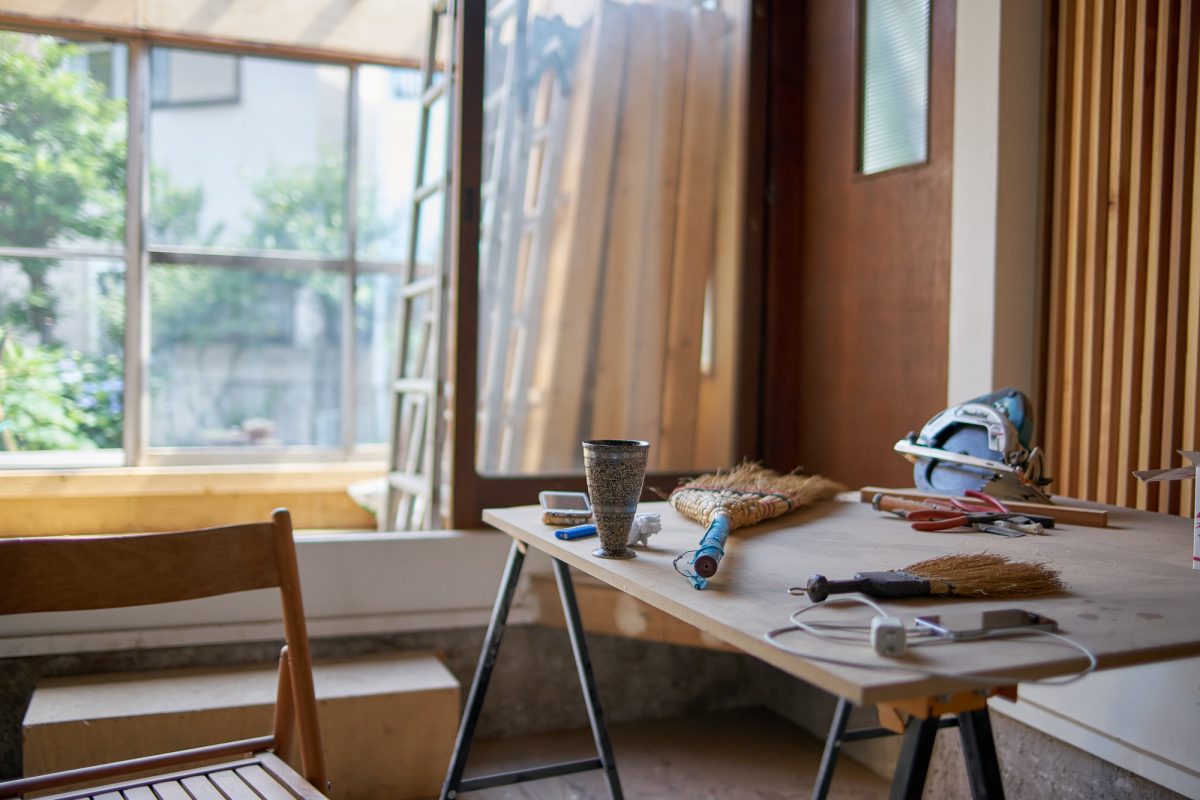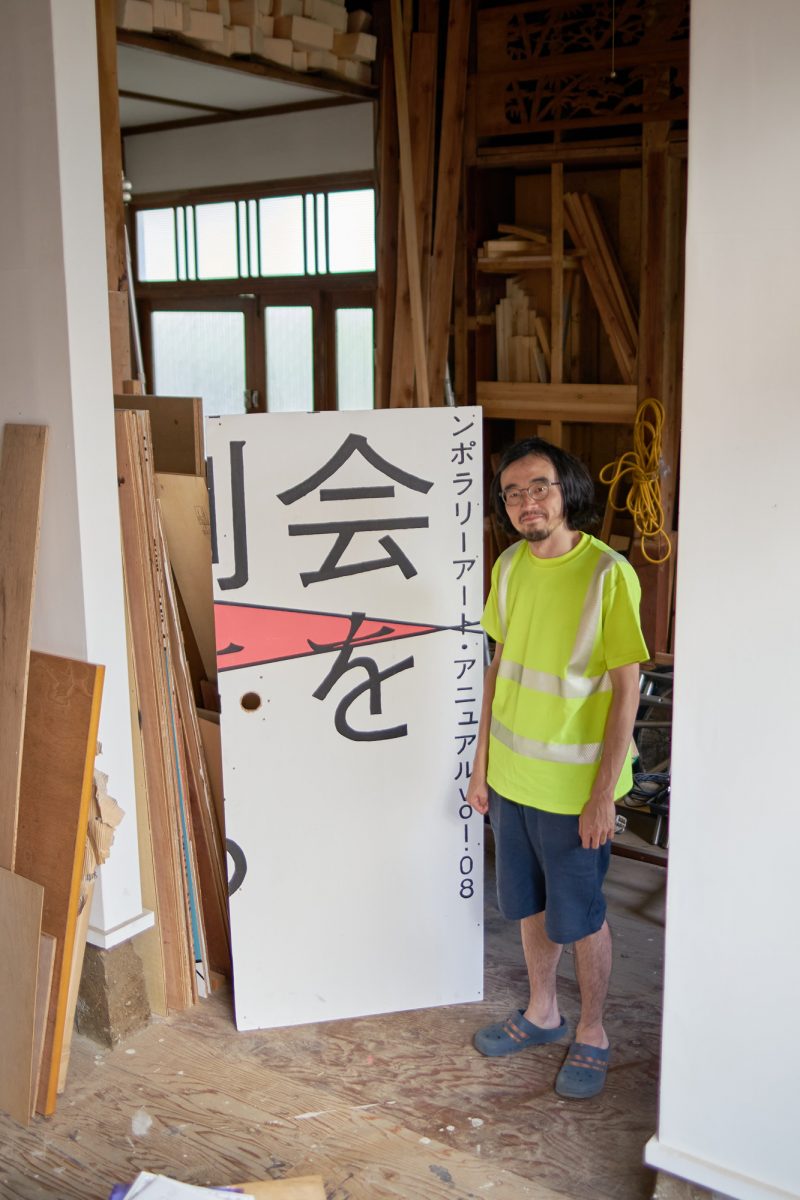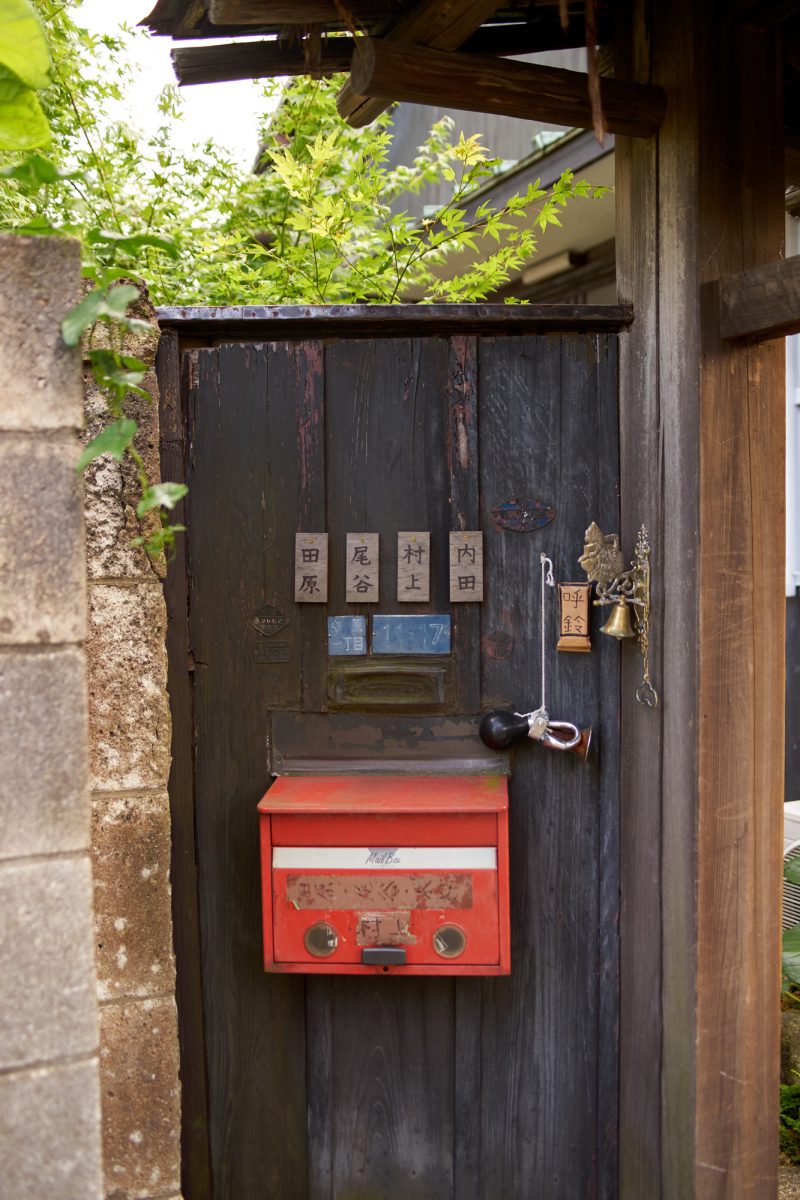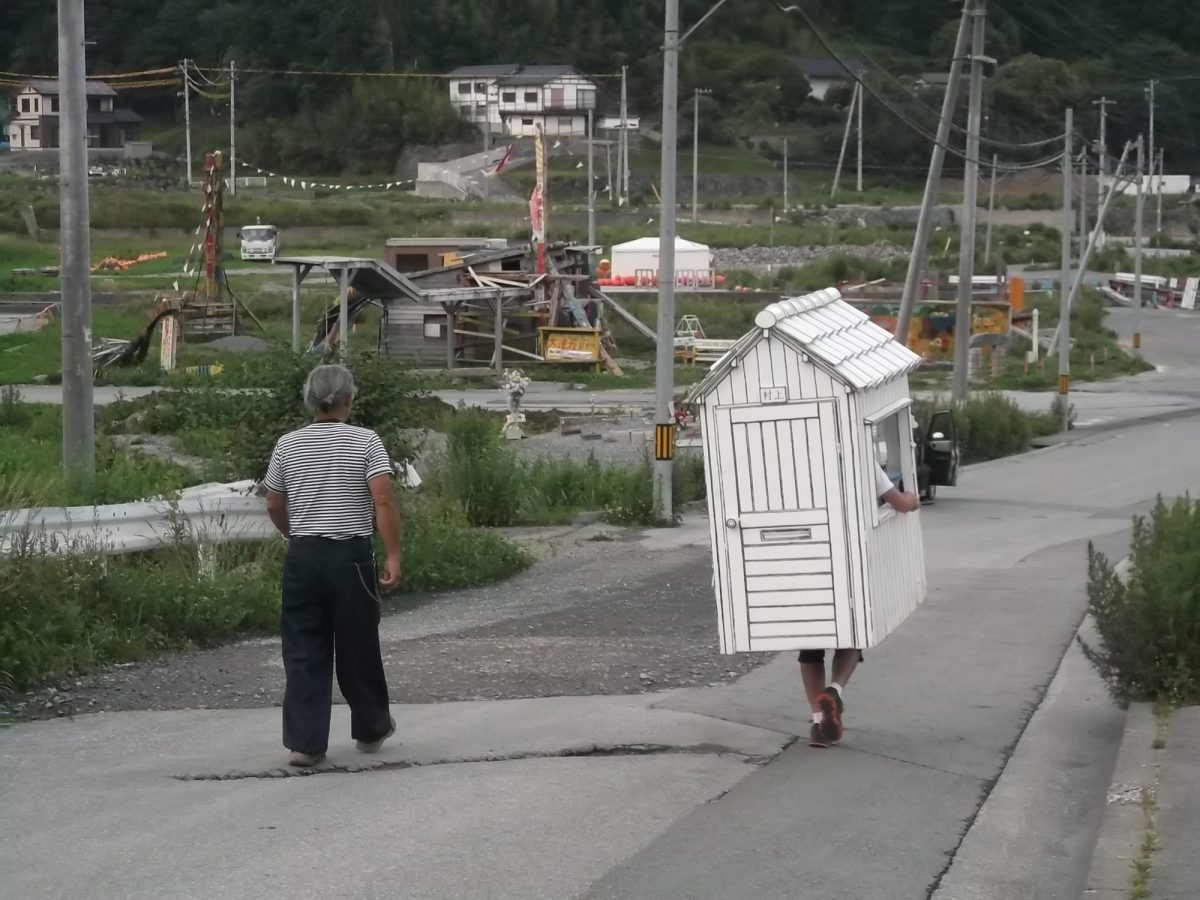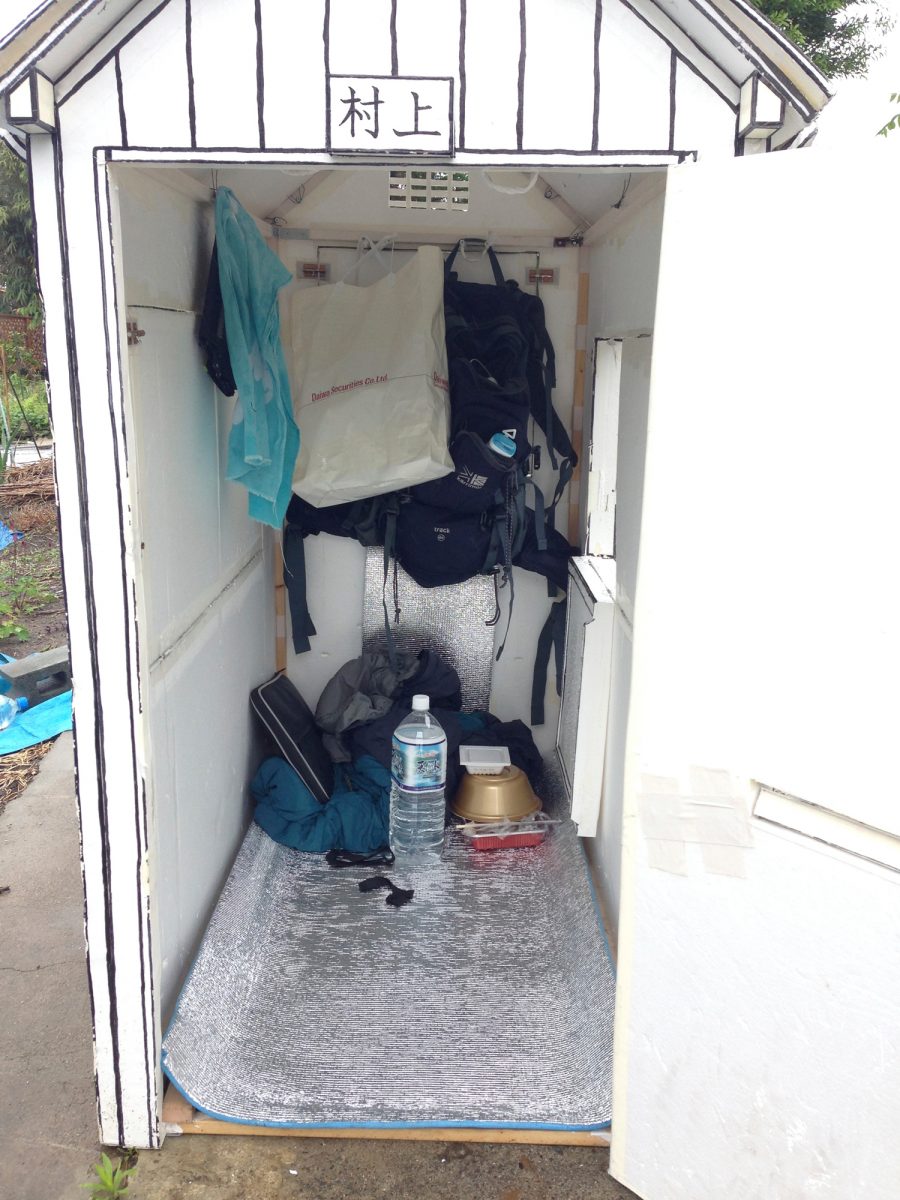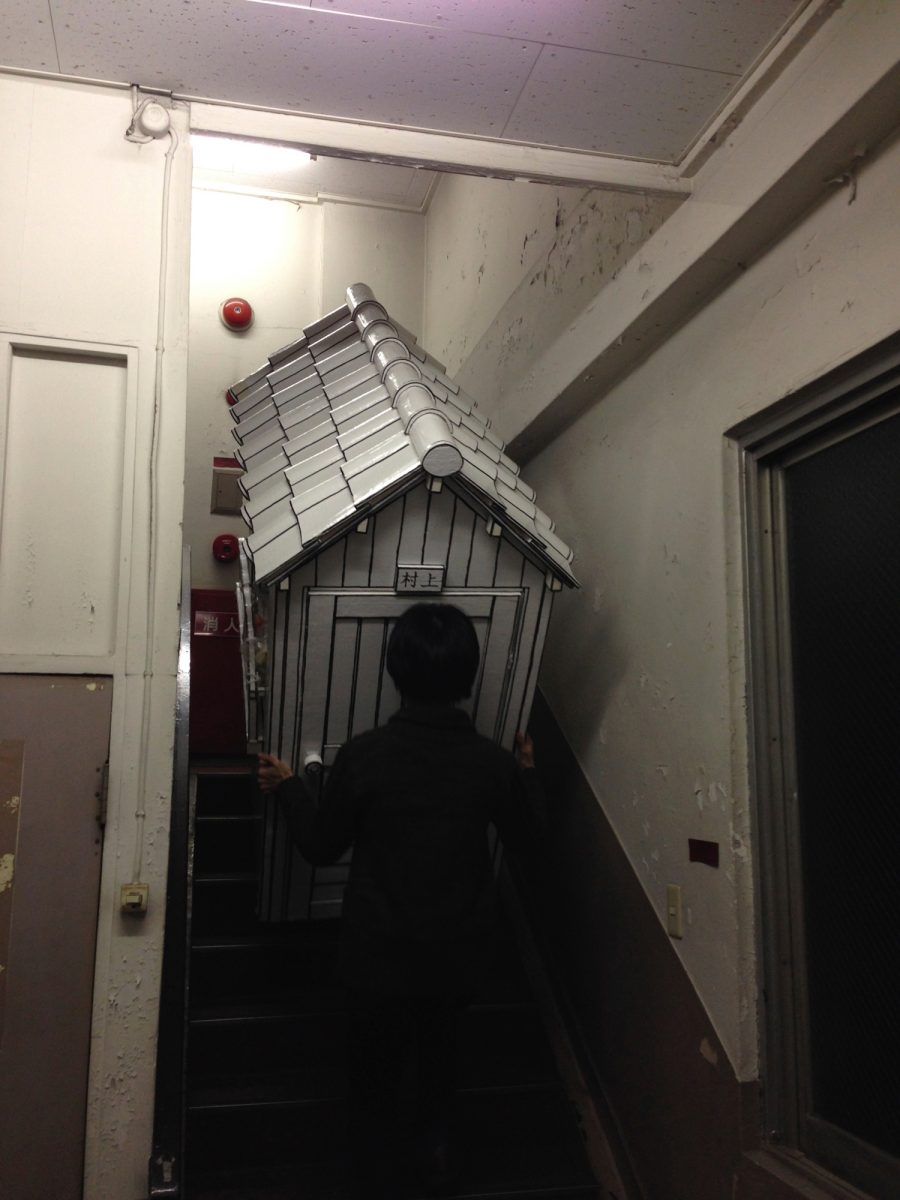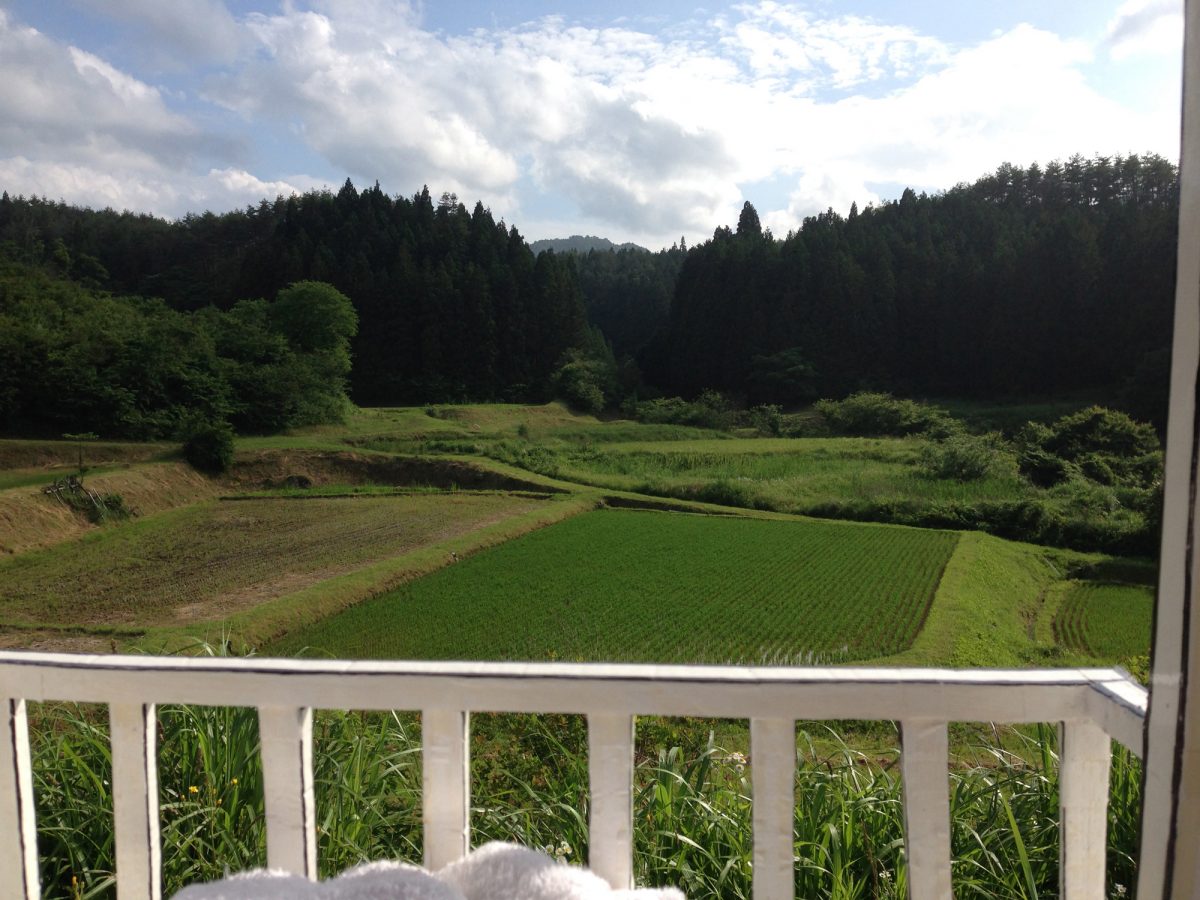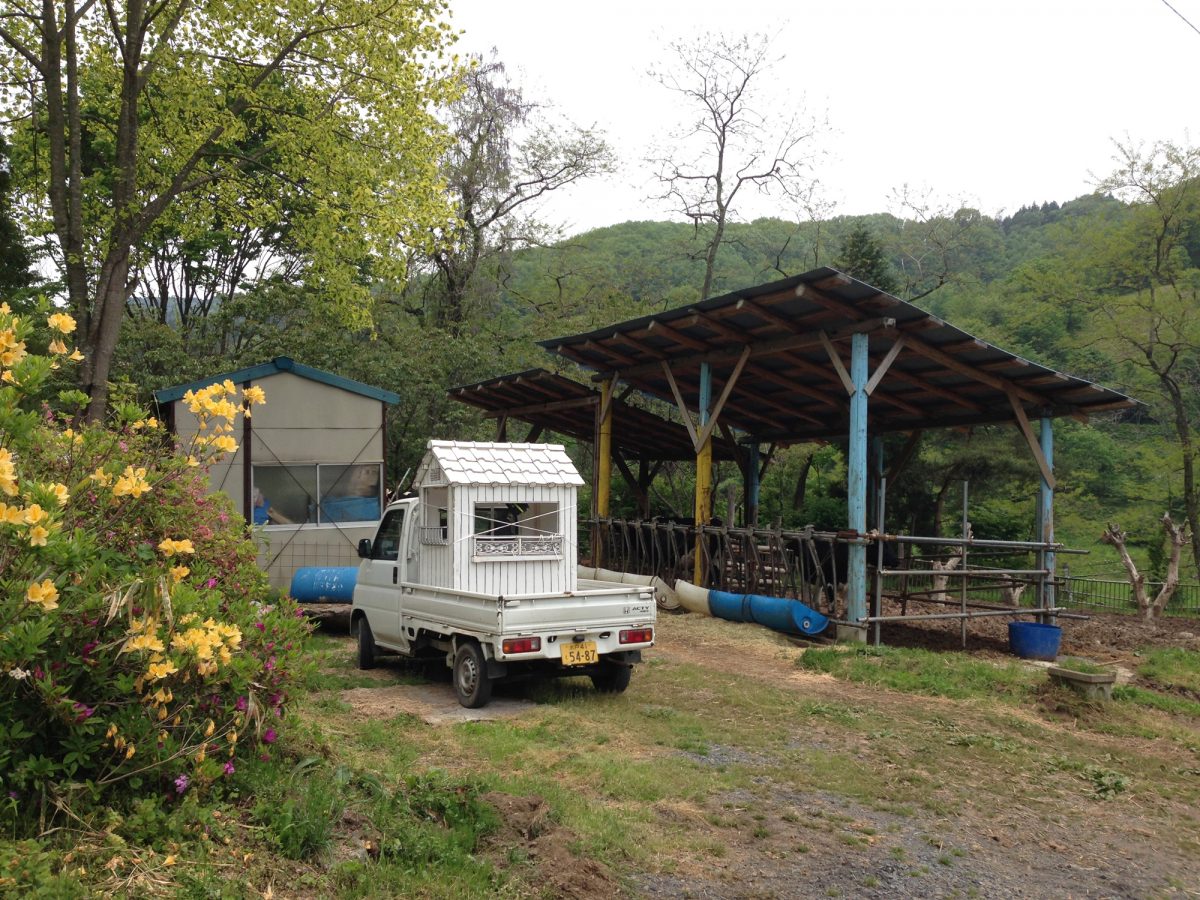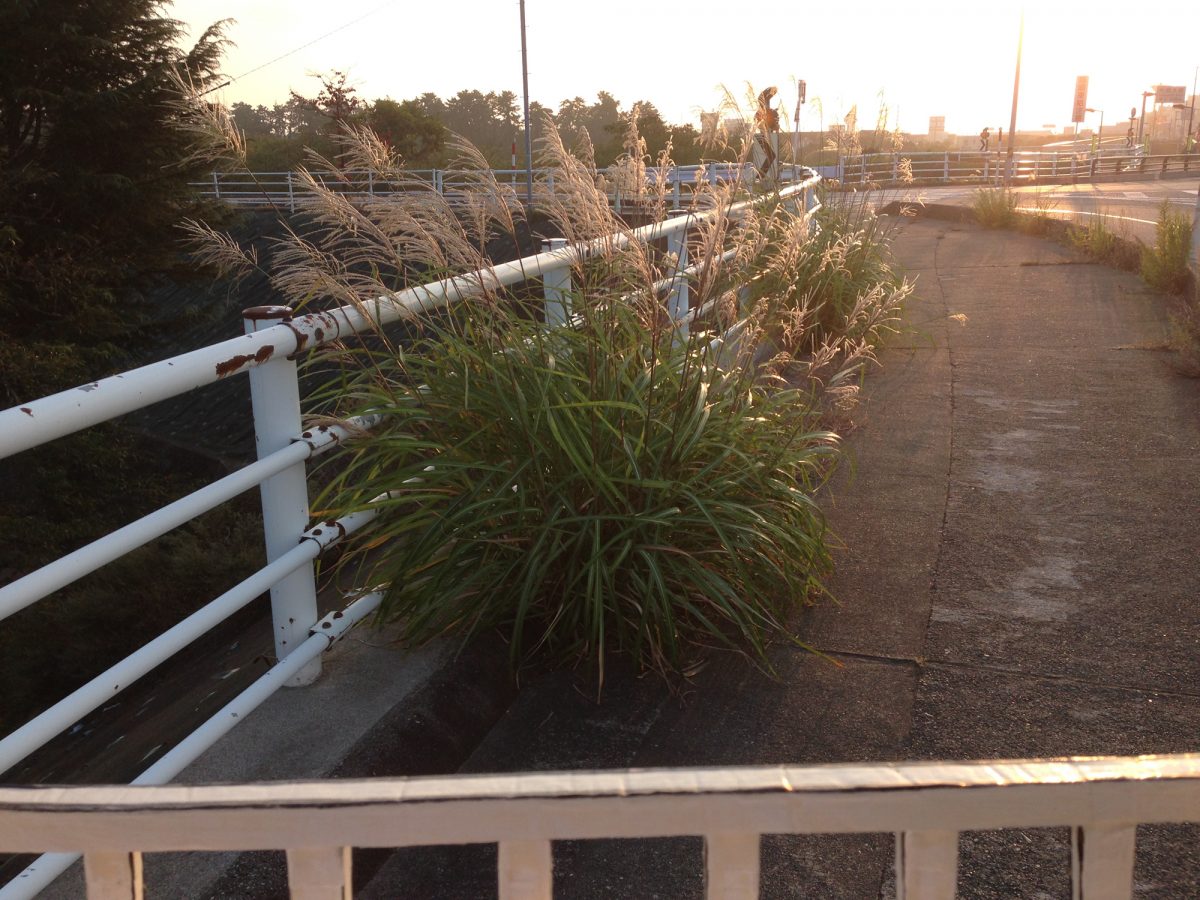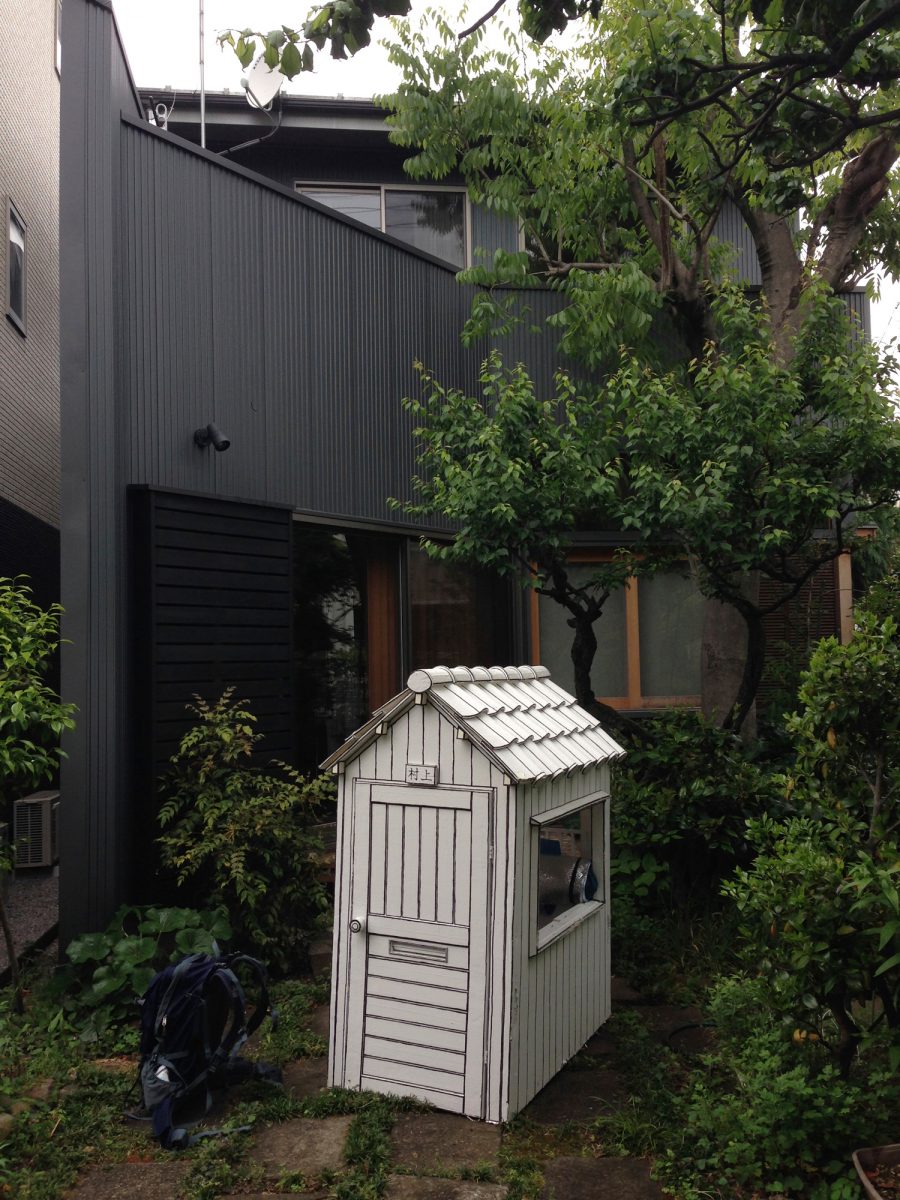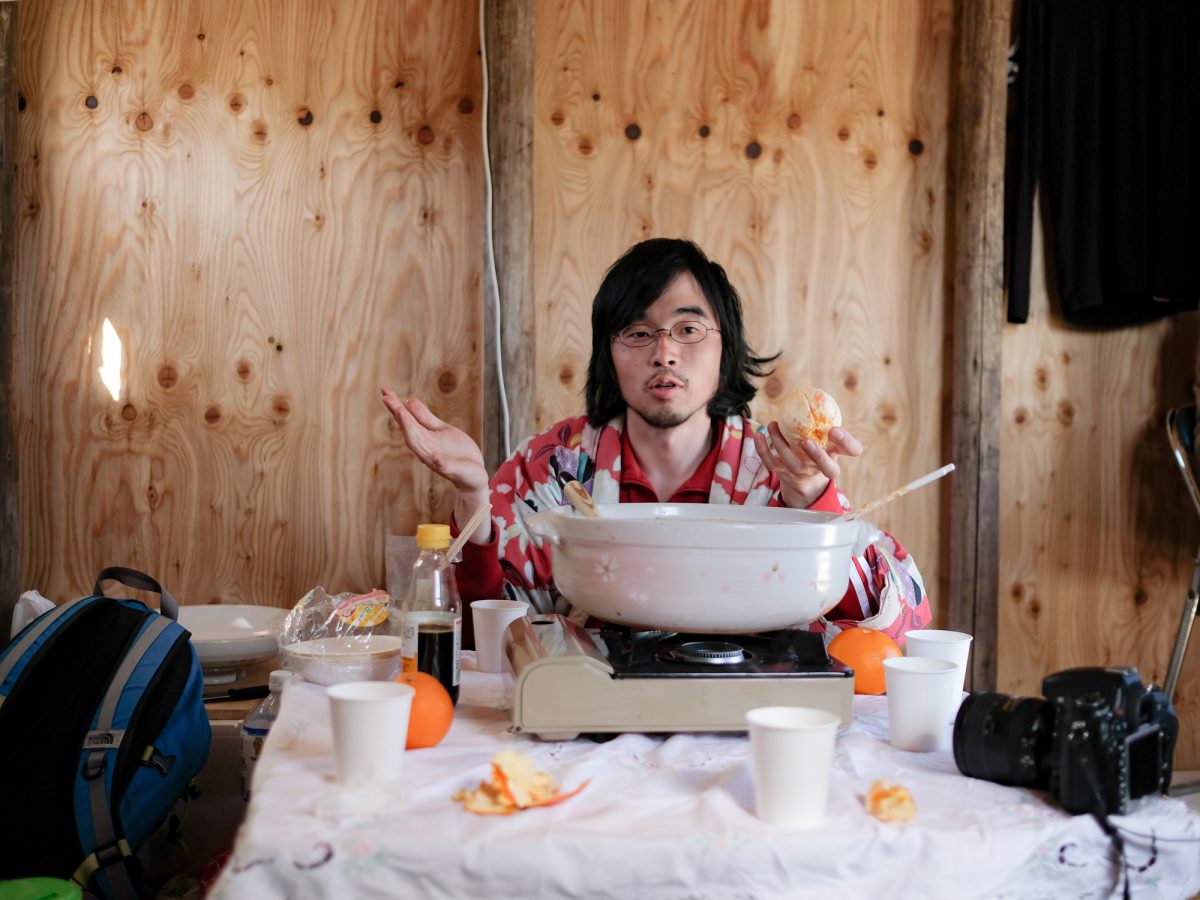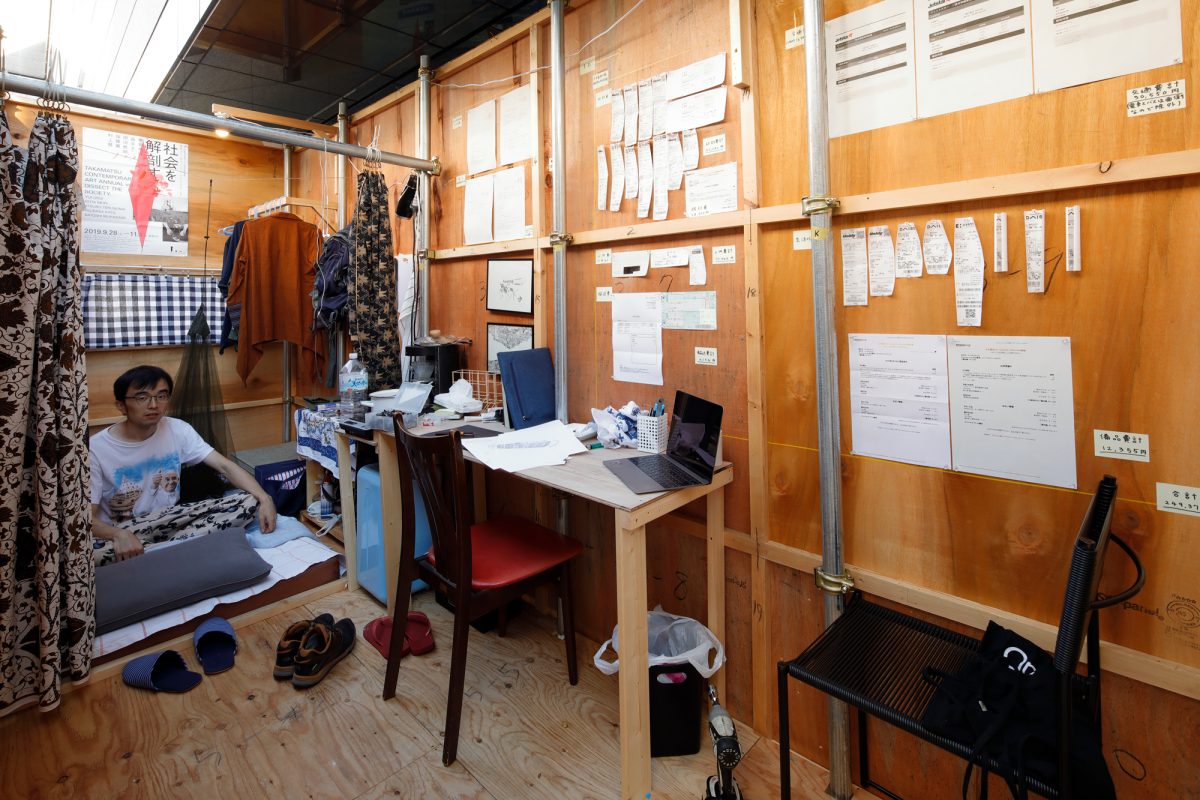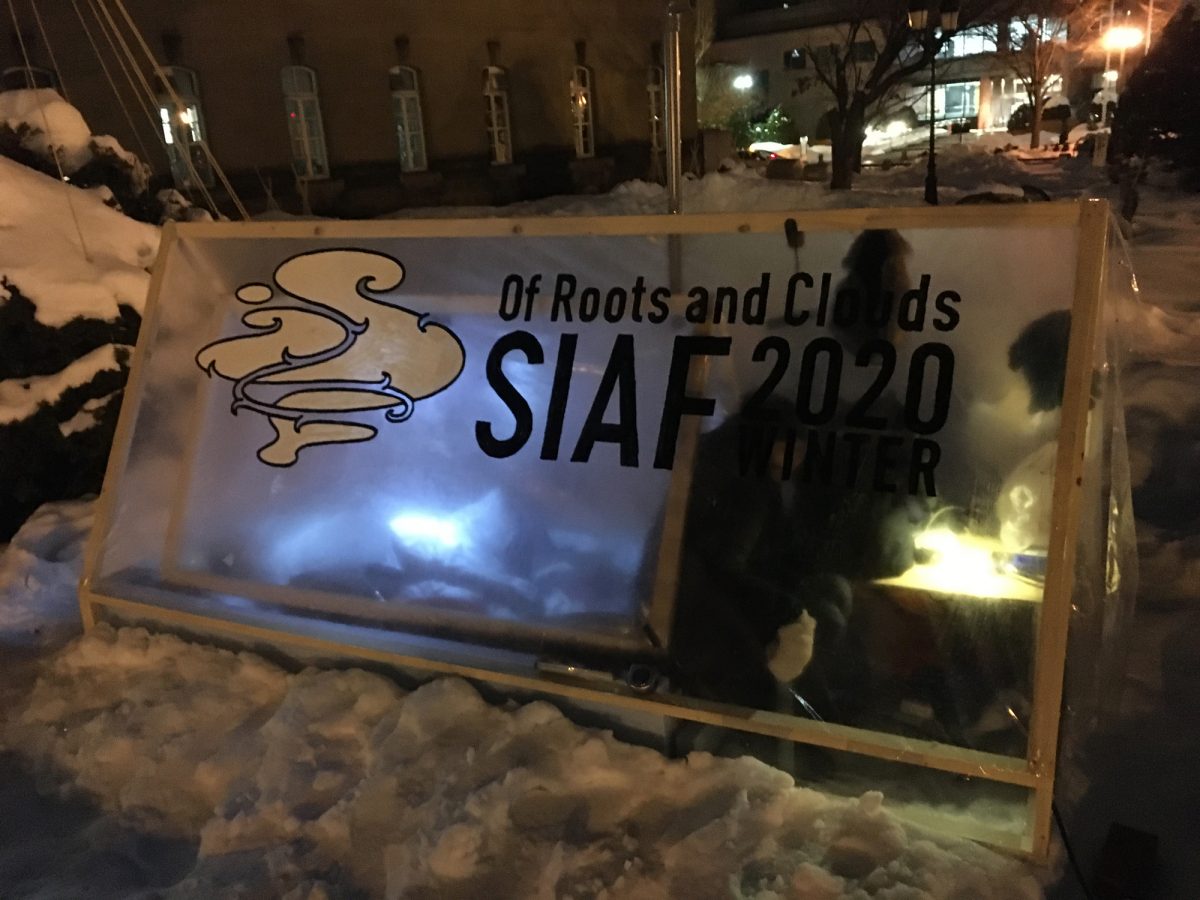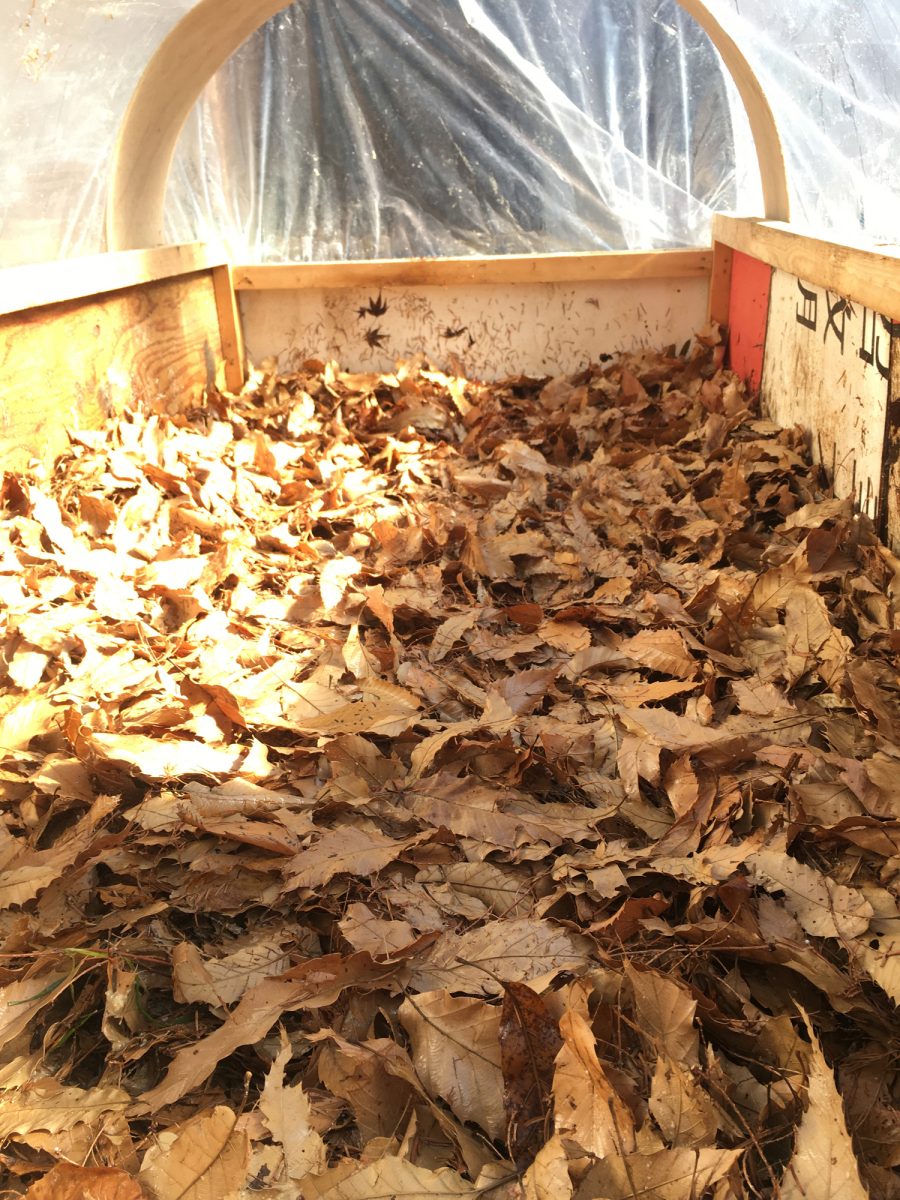Alternative ways of living with artist Satoshi Murakami in Tokyo

Houses are often thought of as fixed points in an urban landscape. What happens when your house moves with you? What if a house could generate its own income? Writers Grace Lovell and Yoshi Tsujimura visited Japanese artist Satoshi Murakami in his studio to discuss alternative ways of living.
Satoshi Murakami lives and works in the suburbs, about 30 minutes from central Tokyo by train. When the Japanese government declared a nationwide state of emergency in April due to the current pandemic, he only walked the five minutes to and from his home and studio each day. For the past months, he has been growing potatoes and bell peppers in his garden. In contrast to his incredibly mobile projects, the events of this year have given Murakami a means to pause and reflect on his foremost preoccupation: the way we live.
Murakami’s studio is an old Japanese house, which he converted into a workspace that he shares with three other artists. Surrounded by electric saws, planks of wood and brooms, Murakami tells us that after graduating from the Department of Architecture at Musashino Art University, he did not know if he wanted to become an architect. “There are too many unconscious assumptions in architecture. When I was a student in my architecture course, I had an assignment to design a wooden villa for a family of three on a site in the mountains. This was intended as a second house for them, but they already had one house, and birds and bugs are living in the mountain too. I started to think, ‘Am I qualified to build them another house all the way up in the mountains?’ Of course, I couldn’t complete that task.”
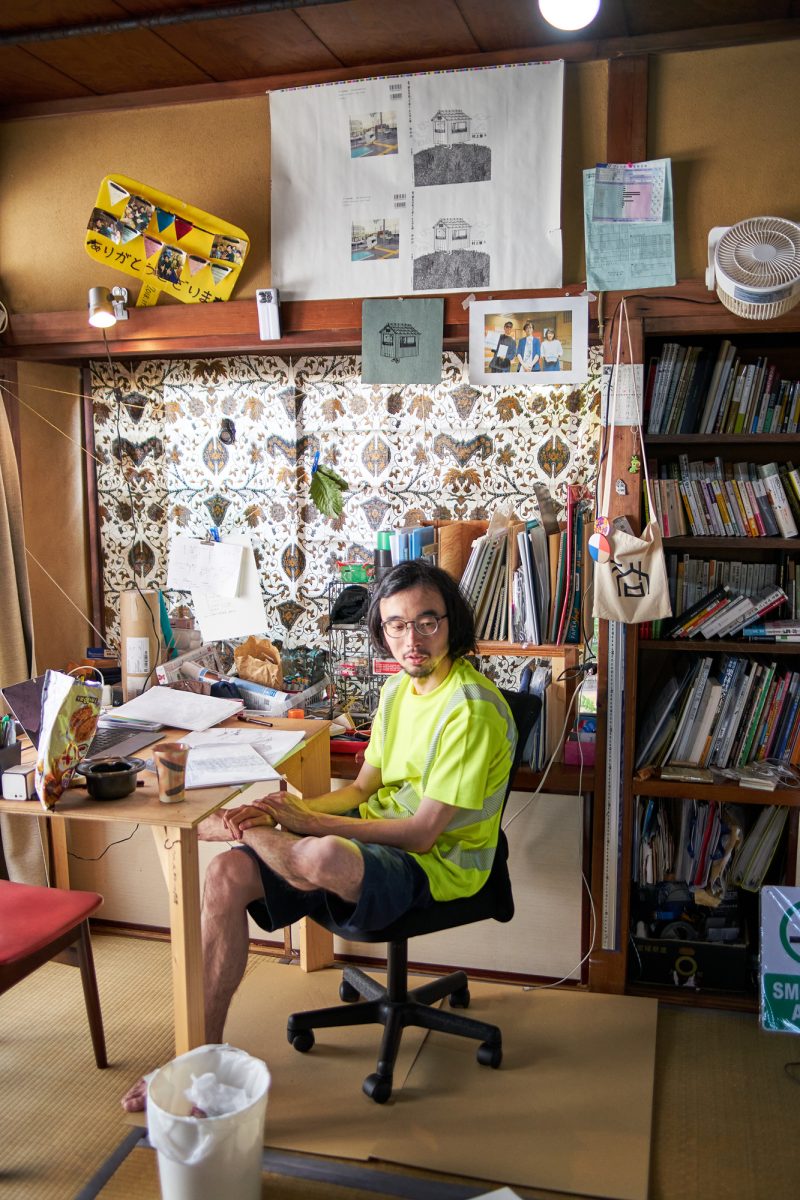
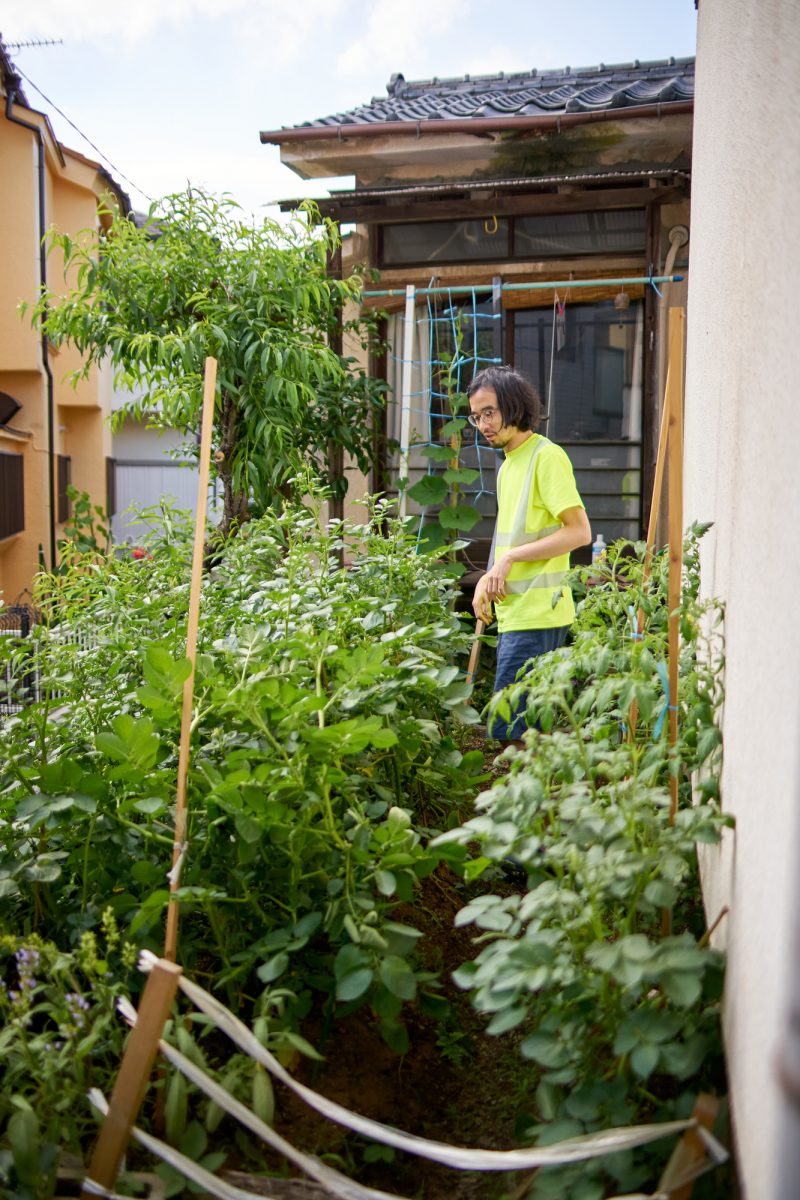
His work centres on unique ways in which the concept of architecture can be used to find new possibilities for living. In 2011, Murakami saw a tsunami ripping down houses in the wake of the Great East Japan Earthquake on TV. He spontaneously built a portable Styrofoam ‘house’ and started walking across Japan carrying it on his back. The artist frames this as a reflex reaction to the devastating 2011 Tohōku earthquake and tsunami – he simply felt compelled to take some form of action. Titled Migratory Life, the project initially entailed the artist moving around Tokyo for three weeks, a capped timeframe that was documented for presentation as a film. Eventually, he travelled with his house all over the country, walking up to 40 kilometres a day:
“In the rubble left by the tsunami’s wake, I saw a dark, morbid irony. Houses were swept away like fragile boxes, leaving only concrete foundations. Yet many displaced homeowners were still on the hook for mortgages on their now non-existent homes. It didn’t make sense. It’s as if the physical home itself were secondary. Instead, people are bound by imaginary contour lines denoting their plot of land, and, as a matter of course, think to rebuild another home where their former [one] stood. In other words, I thought we needed to reconsider our notion of a ‘house’ as delineated into two components; a house is not only shelter but also an infrastructure. First, a house – essentially a box – functions to protect one’s corporeal body from the elements and would-be assailants. Second, a concrete foundation attaches this box to the land. This foundation anchors inhabitants as long-term residents of a specific site, making it easier for the powers-that-be to collect taxes and manage citizens.”
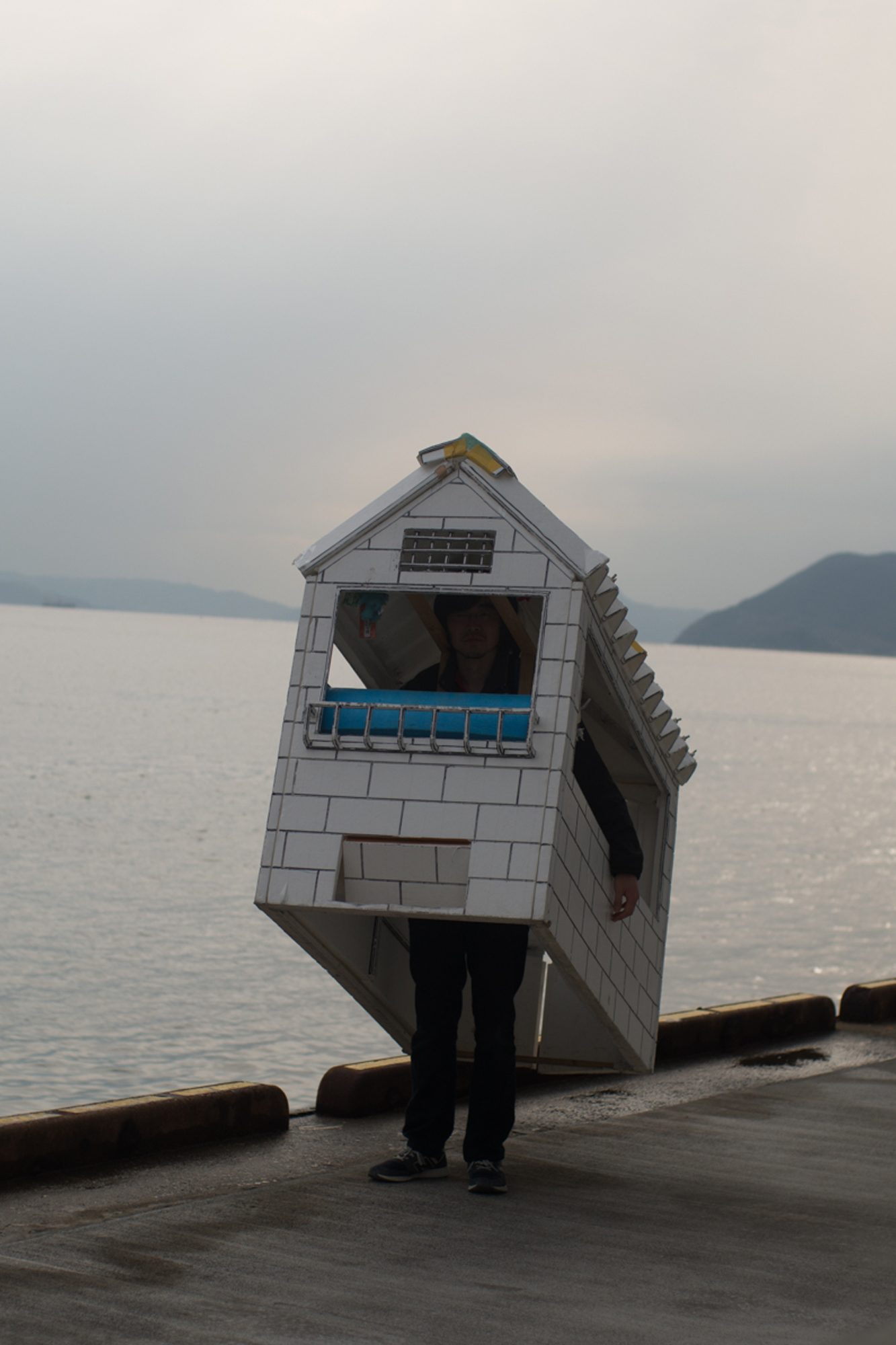
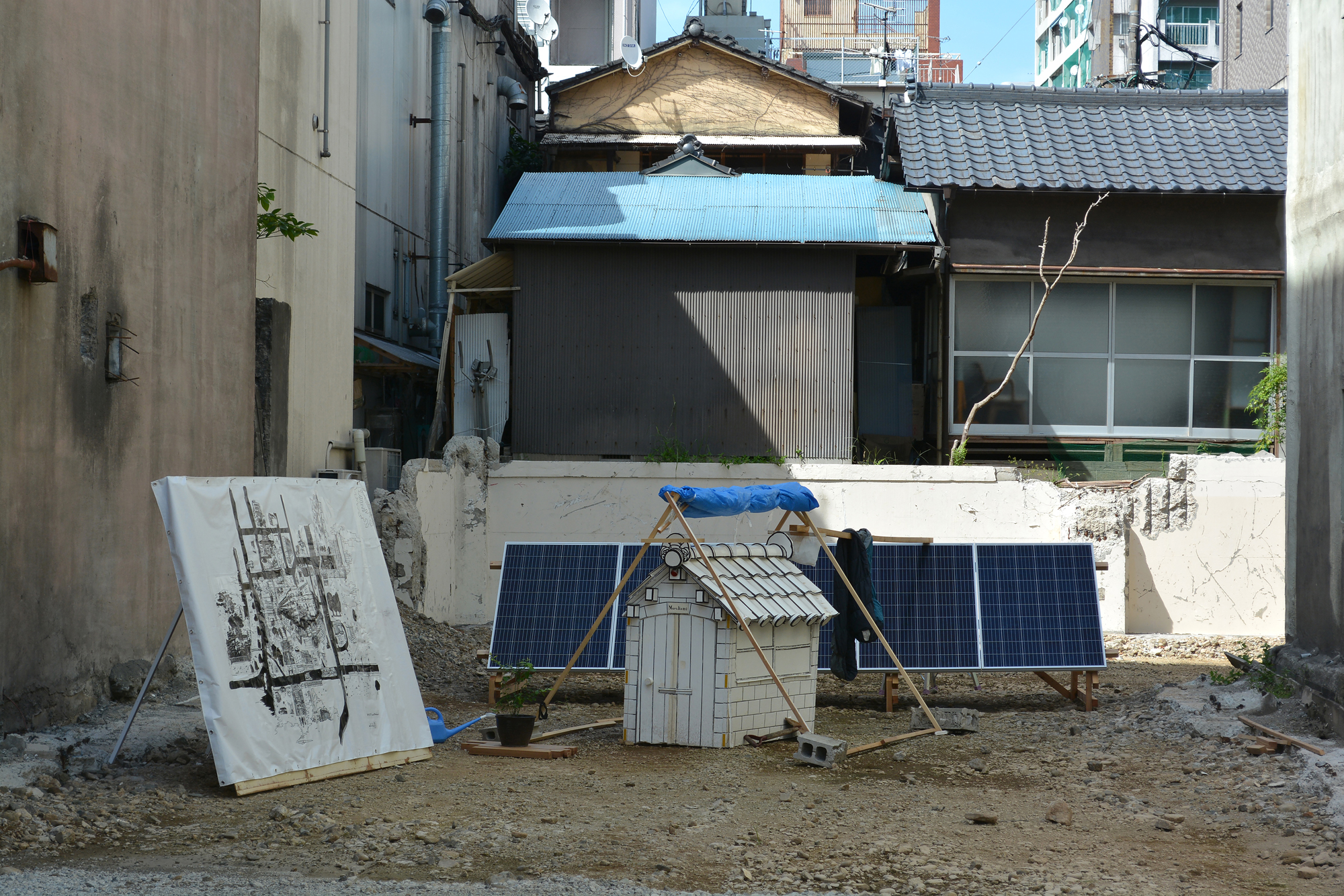
Murakami was preoccupied with the act of moving a house around rather than camping out. To sleep in a tent would be to emulate any other traveller and his purpose was to carry the top part of a house, not simply to live in different places. It was important to Murakami to be able to ask the question, “I’m moving my house around Japan, can I keep it here today?” He felt that his house had to accurately replicate a Japanese house, therefore, he paid close attention to the details of traditional houses, including his own version of kawara (roof tiles), a kamidana (altar) and a mailbox. Of course, it had to be easily portable, so the house is 155 centimetres long, 80 centimetres wide and 135 centimetres high, and, if you include his luggage, it weighs 25 kilograms:
“I began to understand my actions on a conceptual level. I realised that the home strapped to my back was pure shelter, free of infrastructure. A distilled form of shelter, it protected me from the wind and rain, but I was in a constant search for somewhere to place it. Of course, a portable shelter has no foundation, and this meant I needed to rely on others to satisfy my home’s infrastructural function – I had to approach people and ask to borrow their land. In lieu of money, my currency was face-to-face communication. At first, I approached the project with the romance of the road movie genre. I was the wandering vagabond on a journey of self-discovery and didn’t yet truly understand the nuance of my transient lifestyle. However, over time I began to see the profound critical potential in repeating this process of borrowing land and moving house.”
However, in order to continue his migratory life around Japan, Murakami worked part-time at an izakaya (an informal bar) and family restaurant to raise money between trips. It was, he recalls, a “soul-destroying” experience. Most of the money he earned from his hard work disappeared into necessary living expenses. He began to question the idea of living with the aim of “working and paying the rent or mortgage,” and came to think that we need to create an alternative version of life.
One such possibility emerged for Murakami while encountering a billboard at a convenience store during one of his expeditions. In recent years, convenience store signs have tended to be placed lower than in the past. Looking at their phones, no-one pays attention to signs if they are too high up. “As I was walking with my house on my shoulders, I saw a Family Mart billboard placed very low on the ground and I was surprised at how big the convenience store billboard is. I thought a billboard was just information to let people know where the store was, but it is actually an object. I was quite shocked to find this out. It’s just big enough to fit one or two people inside, and it’s also big enough that no-one will notice if someone is inside! From that day on, as I continued to migrate with my house on my back, I started thinking about the possibility of living in a billboard.”
“I consider what I do to be architecture. Architecture is supposed to be a very broad concept, but people continue to do it in a very narrow way.”
The main source of revenue for major internet sites such as YouTube, Google and Facebook is advertising. These sites generate money from the simple act of users watching videos and images on the internet. Many people are not aware of this rather mysterious and invisible labor which generates revenue. Murakami began to visualize living in a ‘house of signage’ and what this would be like. With the money earned from the advertising revenue from the billboards on the outside of the house, could you buy food and live inside the billboard? For Murakami, this intervention shows how advertising revenue has become human labour. He believes that by disclosing the full breakdown of income and expenditure, he can present a model for today’s society in which the current trend of living off advertising is made visible:
“I want to experience, for myself, my body existing within the economic cycle. To live in a billboard is to turn information into mass. A billboard whose purpose is to display information is supposed to have no such mass and the purpose is to install only information in the space. In order to place information, it must inevitably involve an object. This echoes the fact that humans cannot live on information alone. And I myself am not information. Just like a billboard, I need to occupy a certain space in this world in order to exist. I can’t live without eating food such as potatoes, bell peppers, rice and miso. In other words, just as a billboard turns information into an object, I need to turn information into the food and energy I need for my life.”
Last September, Murakami completed a one-week project, Living in a Billboard, at the Takamatsu City Museum of Art. He has identified the challenges of that experience and is working to prepare for his next project, which will take place this winter in Sapporo, Japan’s northernmost city. He has been thinking, researching and experimenting with ways to heat his billboard house in the extremely harsh winter there. He will incorporate a ‘hotbed,’ which uses the fermented heat of fallen leaves instead of other forms of energy, to keep production and consumption as close as possible to each other. In an experiment conducted in Sapporo in February this year, when the air temperature was -4°C outside, the hotbed went up to 30°C and the inside of the billboard was was maintained at 15°C.
Murakami sees the billboard house as an effective solution to the rapid changes we now face. Amid the Covid-19 crisis, it is difficult to engage in standard economic activities, yet we have no choice but to continue to pay our rent. Murakami views this as “the kind of situation that the billboard house can help with. In other words, by staying at home, could we create advertising effects and bring in money just by living there? It could become like a job to just stay at home.” In Sapporo, he will make the billboard transparent, for he thinks that if his life inside is made visible, it will make the advertising more effective.
Murakami’s art practice, which was first inspired by the impact of disaster, is now entering a new phase. While he no longer feels able to walk all over Japan carrying a house year-round, by doing so, was he able to find some kind of answer to the idea of ‘living’? “What I want to do is to create a series of alternatives rather than find a solution. I think my job is to keep creating other ways of living. I consider what I do to be architecture. Architecture is supposed to be a very broad concept, but people continue to do it in a very narrow way.”
